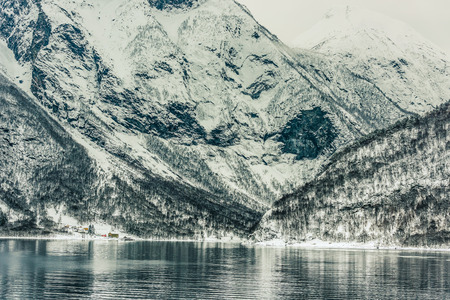1. Introduction to Hidden Camping Gems
When most people think of camping in the U.S., iconic places like Yosemite, Yellowstone, or the Grand Canyon often come to mind. While these spots are undeniably beautiful, they’re also often packed with tourists, booked months in advance, and can feel more like a theme park than a peaceful nature escape. That’s where hidden gems come in—lesser-known campgrounds tucked away in serene forests or along quiet lakeshores that offer a more authentic and relaxing outdoor experience.
These underrated destinations aren’t just about avoiding crowds—theyre about discovering places where you can truly connect with nature. Whether it’s waking up to the sound of birds instead of generators or watching the sunset over a tranquil lake with no one else around, these spots give campers a chance to slow down and enjoy the simple joys of outdoor living.
Why Choose Lesser-Known Campgrounds?
Choosing an off-the-radar campground has some real advantages that go beyond just fewer people. Here are a few reasons why seasoned campers love exploring these hidden gems:
| Benefit | Description |
|---|---|
| More Peace & Quiet | No large crowds, fewer RVs, and less noise—just you and nature. |
| Better Availability | Easier to book last-minute trips without competing for limited spots. |
| Lower Costs | Lesser-known sites often have lower fees or are even free. |
| Unique Scenery | Undiscovered lakes, hidden waterfalls, and untouched forests await. |
| Local Culture | Experience small-town hospitality and regional traditions nearby. |
A Different Kind of Adventure
If youre looking to ditch the crowded campsites and discover something truly special, this guide will take you through some of the best under-the-radar forest and lake campgrounds across the U.S. Whether youre a weekend warrior or planning an extended road trip, exploring these quiet corners of nature might just become your new favorite way to camp.
2. Remote Lakeside Campgrounds Worth Discovering
If youre looking to unplug and escape the crowds, remote lakeside campgrounds offer the perfect blend of tranquility and adventure. These hidden gems are tucked away from busy tourist spots, offering peaceful waters, stunning natural views, and endless opportunities for fishing, kayaking, and swimming.
Why Choose a Remote Lakeside Campsite?
Unlike popular lake destinations that can get noisy and overcrowded, these lesser-known spots give you the space to truly relax. Whether youre casting a line at sunrise or paddling through calm morning waters, these campsites allow you to experience nature in its purest form.
Top Underrated Lakeside Campgrounds in the U.S.
| Campground | Location | Activities | Special Features |
|---|---|---|---|
| Lake Catherine State Park | Arkansas | Fishing, Kayaking, Hiking | Waterfall trails, quiet coves |
| Swan Lake Campground | Montana | Canoeing, Wildlife Watching | Surrounded by Flathead National Forest |
| Lost Lake Campground | Colorado | Paddleboarding, Swimming | Scenic mountain backdrop |
| Twin Lakes Campground | California (Eastern Sierra) | Fishing, Boating, Hiking | Lakeside views with alpine peaks |
| Bear Lake State Park (East Side) | Utah/Idaho Border | Swimming, Jet Skiing, Camping | Lesser-known side with fewer crowds |
What to Bring for a Remote Lakeside Adventure
- Kayak or Canoe: Great for exploring quiet inlets and fishing spots.
- Fishing Gear: Most of these lakes are stocked or naturally rich with fish.
- Swimwear & Towels: The clear waters are too tempting to resist.
- Mosquito Repellent: A must-have when camping near water.
- Portable Water Filter: Especially useful in remote areas without potable water.
Tips for Enjoying These Hidden Lakeside Spots
Cell reception might be limited in some of these areas—download maps ahead of time. Always check local regulations for campfires and fishing licenses. And remember: pack out what you pack in to keep these beautiful places clean and pristine for future campers.
Your Peaceful Getaway Awaits
If your idea of a perfect weekend includes waking up to birdsong, paddling across glassy waters, or catching dinner right from the shore, these underrated lakeside campgrounds are calling your name. Grab your gear and head off the beaten path—you won’t regret it.
![]()
3. Underrated Forest Escapes
If youre craving a quiet camping experience surrounded by towering trees and peaceful trails, these underrated forest getaways offer the perfect escape. Far from the crowds of national park hotspots, these hidden woodland sites give you the chance to truly connect with nature. Whether youre looking for backcountry solitude or a cozy tent site nestled among pines, these forest campgrounds deliver dense canopy cover, miles of hiking paths, and a genuine wilderness vibe.
Why Choose a Forest Escape?
- Privacy: Secluded campsites mean fewer neighbors and more peace.
- Shade: Thick tree cover keeps you cool during summer months.
- Scenic Trails: Many of these campgrounds are gateways to incredible hiking routes.
- Wildlife: Spot deer, birds, and other forest creatures in their natural habitat.
Top Hidden Forest Campgrounds Worth Discovering
| Campground | Location | Highlights |
|---|---|---|
| Moose River Plains | Adirondack Park, New York | Primitive roadside camping with deep woods and access to remote trails |
| Bald River Falls Area | Cherokee National Forest, Tennessee | Near waterfalls with shaded campsites and riverside hikes |
| Siskyou Backcountry Sites | Klamath National Forest, California | Dense forests, little-known trails, and dispersed camping options |
| Lick Creek Park Campground | Bitterroot National Forest, Montana | Pine forests, mountain views, and great wildlife spotting opportunities |
Tips for Enjoying These Hidden Spots
- Check road access: Some sites may require high-clearance vehicles or be seasonal only.
- Pack in, pack out: Many of these locations have no trash service—leave no trace!
- Bring bug spray: Thick woods can mean more insects during warmer months.
- Stay informed: Always check local forest service updates for fire restrictions or trail closures.
If youre searching for that off-the-grid camping experience under a canopy of trees with nothing but birdsong and rustling leaves around you, these underrated forest escapes are exactly what you need. Theyre not just places to pitch a tent—theyre gateways to adventure and tranquility away from the mainstream crowd.
4. Seasonal Tips and What to Expect
When planning a trip to one of Americas underrated forest or lake campgrounds, timing can make all the difference. These hidden gems are often less crowded than popular sites, but that also means fewer amenities and services—so preparation is key.
Best Times to Visit
Most of these campgrounds shine in late spring through early fall, but each season offers something unique:
| Season | Why Visit | Considerations |
|---|---|---|
| Spring (April–June) | Wildflowers in bloom, flowing creeks, fewer crowds | Watch for muddy trails and unpredictable weather |
| Summer (July–August) | Ideal for swimming, boating, longer daylight hours | Increased bugs, bring bug spray and shade gear |
| Fall (September–October) | Cooler temps, stunning foliage, peaceful atmosphere | Nights can get chilly; pack layers and insulated gear |
| Winter (November–March) | Quiet solitude, snow-covered scenery in some regions | Limited access; check road conditions and closures |
Essential Gear Checklist
Because many underrated spots lack full-service facilities, it’s important to bring the right gear. Here’s what you shouldn’t forget:
- Water Filtration System: Many remote campsites don’t have potable water.
- Portable Toilet or Trowel: For areas without restrooms, practice Leave No Trace principles.
- Campsite Lighting: Bring extra lanterns or headlamps—these areas may be darker at night due to limited infrastructure.
- Bug Protection: Mosquitoes and ticks are common near lakes and forests during warmer months.
- Bear-Proof Food Storage: Especially important in national forests and backcountry areas.
- Weather-Appropriate Clothing: Temperatures can swing drastically depending on elevation and time of year.
- Duct Tape & Basic Repair Kit: Small fixes can save your trip in a remote location.
Preparing for Limited Amenities
If youre heading to lesser-known campgrounds like those tucked away in the Ouachita National Forest or along Idahos Priest Lake, expect minimal signage, pit toilets (if any), and possibly no cell service. Heres how to be ready:
Navigating Without Service
Download offline maps ahead of time using apps like Gaia GPS or Google Maps. A printed map is also a smart backup.
Campsite Selection Tips
- Avoid low-lying spots that could collect rainwater overnight.
- If allowed, set up camp at least 200 feet from water sources to protect fragile ecosystems.
- Select flat ground free of rocks and roots for sleeping comfort.
Sustainable Camping Practices
Many hidden gems rely on responsible campers to stay pristine. Remember to pack out all trash, minimize campfire use during dry seasons, and avoid disturbing wildlife. Some areas may require permits—even if they’re off the beaten path—so always check with local ranger stations before heading out.
A little extra planning goes a long way when exploring these under-the-radar destinations. With the right approach, youll enjoy peaceful settings few others ever experience.
5. Leave No Trace and Local Etiquette
When youre exploring hidden gems like underrated forest and lake campgrounds across the U.S., its super important to keep them just as beautiful for the next person. These lesser-known spots often dont have the same maintenance or staff presence as popular campgrounds, so practicing Leave No Trace is key to protecting these special places.
What Is Leave No Trace?
Leave No Trace is a set of outdoor ethics that helps us minimize our impact on nature. Here are the 7 core principles:
| Principle | What It Means |
|---|---|
| Plan Ahead and Prepare | Know the rules of the area, bring proper gear, and be ready for weather changes. |
| Travel and Camp on Durable Surfaces | Stick to trails and established campsites to avoid damaging fragile ecosystems. |
| Dispose of Waste Properly | Pack it in, pack it out—even leftover food and toilet paper. |
| Leave What You Find | Dont take rocks, plants, or historical items home with you. |
| Minimize Campfire Impact | Use a stove when possible; if fires are allowed, keep them small and use existing fire rings. |
| Respect Wildlife | Observe animals from a distance and never feed them—your snacks can make them sick or aggressive. |
| Be Considerate of Other Visitors | Keep noise down, yield on trails, and let others enjoy the peace too. |
Respecting Local Wildlife
The forests and lakes youre camping near are home to all kinds of wildlife—from curious raccoons to majestic elk. To protect both animals and yourself:
- Store food in bear-proof containers or hang it properly if required.
- Don’t leave food scraps or trash behind—it can attract wildlife and create dangerous situations.
- If you see animals, observe quietly from a distance. Don’t try to approach or feed them.
Caring for Local Communities
A lot of these hidden gems are located near small towns or rural areas. Being a good guest means:
- Shopping local—grab supplies or souvenirs from nearby stores to support the community.
- Following posted rules—some areas may have fire bans or limited access due to conservation efforts.
- Being polite to locals—remember, this is their backyard. A friendly attitude goes a long way!
Your Role as a Camper
You don’t need to be an expert to make a big difference. Just being mindful—cleaning up after yourself, respecting nature, and treating others kindly—helps preserve these incredible spots for future campers. Let’s keep America’s best-kept camping secrets wild and wonderful!


